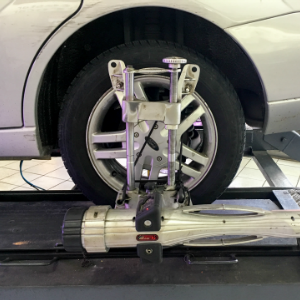Alignment is a service well known to drivers also because it is done often or should be. But, like any other car-related item, it is an endless source of doubt. Here are selected five basic tips so that drivers do not fall into small talk when taking the car to the garage. For wheel Alignment in Miami you can now have the best option now.
Alignment has expiration date

Manufacturers recommend, in Brazil and worldwide, that cars be aligned every 10,000 kilometers. Our bumpy streets and roads, however, can make this need anticipated. If the car is pulling, look for a reliable garage.
Rear alignment exists
Most compact and medium-sized vehicles only receive alignment on the front wheels. In models with independent rear suspension, of which the most common is the multilink type, present, for example, in some versions of Volkswagen Golf and Ford Focus, there is a need to align the rear suspension arms, which may lose the original setting. The car should be aligned at most every 10,000 kilometers but do drivers know the procedure well?
No need to balance every time the car is lining up
Wheel balancing is not linked to alignment. The practice should be performed when the steering wheel is vibrating, too hard, when the driver changes the tires or when the mileage stipulated for it is reached.
Camber must follow manufacturer’s parameters
Camber is the perpendicularity of the wheel to the ground. Failure to comply with the car model may cause suspension or damper problems. The solution in these cases is to replace the components. The owner must always maintain the wheel angle determined by the vehicle manufacturer.
Pulling steering is not always the result of misalignment
Other reasons besides misalignment of the steering geometry may cause the car to pull the steering, such as uneven tire pressure on opposite sides of the car. If the brake system is acting differently on the wheels, or if there is a difference in tire wear, the same problem may occur. Even wet roads can affect the direction of the car. So try to keep the car straight under different conditions after checking the tire pressure.
Before going to the mechanic
You need to be aware of both types of imbalance as they will determine the type of maintenance required. Static unbalance is the unbalance caused by vibration in the vertical plane of the wheel. It will make the wheel jump, which begins to feel when the car reaches around 60km / h and gradually increases. Already the dynamic, causes the wheel to stagger sideways. It starts to be noticed when the vehicle rotation enters the resonance state, around 80km / h, and stops being felt after 130km / h.
A quick analysis can indicate if your car needs adjustments. Look straight ahead at your vehicle: the wheels should be as close to 90 ° as possible, i.e. at right angles. Don’t forget the calibration and check with the professional, the need to perform the balance, important service to ensure driving comfort and maintain tire performance.


